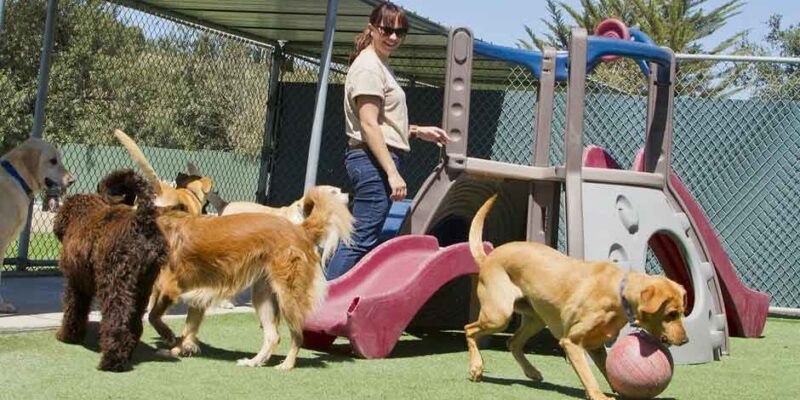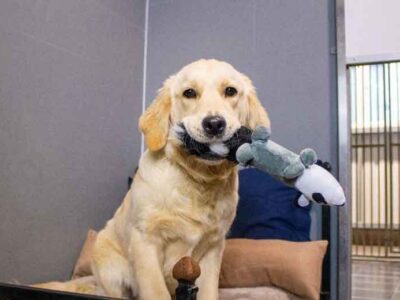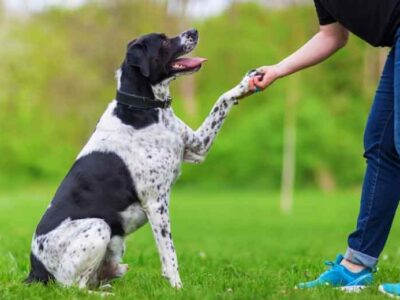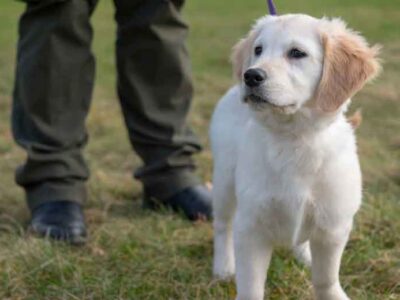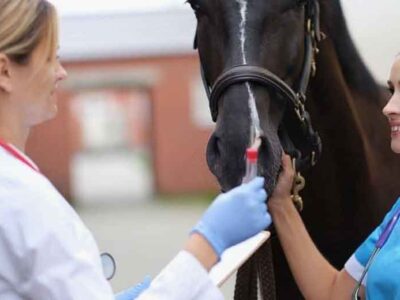For many pet owners, the thought of leaving their dog in someone else’s care, even temporarily, can bring a mix of anxiety and guilt. Dogs, too, often struggle with being away from their usual routine and family. Whether you’re heading out on vacation or dealing with an emergency that requires you to board your dog for the first time, preparation is critical in ensuring a smooth and comfortable experience for both of you. We will explore essential steps to help your dog transition to a boarding environment with confidence, familiarity, and calm behavior.
Steps to Help Your Dog Transition Smoothly into Boarding
- Start With Short Separations at Home
A dog that has never been left alone may feel great stress when boarded for the first time. Introduce short separations gradually to help your dog become comfortable with your absence. Begin by stepping out of the room for just a few minutes and increase the time slowly over several days. This approach helps reduce attachment anxiety and teaches your dog that you will always return. Avoid dramatic goodbyes, as this can elevate their sense of stress. Instead, be calm and casual to normalize the experience. If your dog struggles during these early attempts, try offering a favorite toy or treat as a distraction. Over time, these mini departures help your dog grow confident in spending time away from you, laying the foundation for smoother transitions at a boarding facility like Happy Dog Resort.
- Familiarize Your Dog With a Crate or Carrier
Many boarding facilities use crates or designated sleeping areas, which can feel foreign and stressful to a dog unfamiliar with confined spaces. Getting your dog used to a crate or small sleeping area ahead of time can ease their adjustment. Crate training at home, when done positively, creates a space your dog sees as a secure and peaceful retreat. Start by allowing your dog to explore the crate freely, without shutting the door, and reward them for going inside. Place a blanket, a soft toy, or even an item of your clothing inside to make it smell like home. Gradually increase your dog’s time in the crate until they can rest comfortably for extended periods. By making a crate a safe, familiar spot, your dog is more likely to feel secure when staying in a new environment during their boarding stay.
- Schedule a Pre-Visit to the Boarding Facility
Before committing to a full boarding stay, take your dog to visit the facility. Even a short walkthrough can help your dog become familiar with the smells, sounds, and overall layout. These pre-visits are an excellent opportunity to introduce your dog to the staff and allow them to observe other dogs in the environment. Bring your dog’s favorite toy or blanket during the visit to associate the new space with familiar comforts. Let them sniff around if allowed and spend a few minutes in a boarding suite or play area. The goal is to reduce the shock of being in a new place by making it feel recognizable. Repeated visits, even if short, can go a long way in easing your dog into the idea of staying there longer. These experiences build positive associations and reduce stress on the day of drop-off.
- Pack Comfort Items From Home
Familiar scents and belongings can provide emotional comfort for your dog during their stay. When preparing for their first boarding experience, consider packing a small bag with their favorite toys, a blanket they regularly sleep on, and a t-shirt or item of clothing that smells like you. Scent is powerful for dogs and strongly linked to security and routine. Avoid packing too many items, as most boarding facilities have limited space and strict policies. One or two meaningful objects are usually sufficient. The bag includes written feeding instructions, medical information, and emergency contact numbers. These comfort items offer more than just distraction—they serve as emotional anchors, helping your dog settle in more quickly and reducing their need to rely solely on the unfamiliar surroundings for comfort.
- Update Vaccinations and Health Records
Most boarding facilities require up-to-date vaccinations and health documentation to ensure the safety and well-being of all animals in their care. Schedule a vet visit well before your dog’s stay to confirm that all core vaccines—such as rabies, distemper, and bordetella—are current. In some cases, additional shots like canine influenza may be required depending on regional risks or facility policies. Bring a printed copy of your dog’s vaccination record and any other medical instructions, including medications or allergies. Ensuring your dog’s health is in order gives you peace of mind and helps prevent last-minute complications. It also demonstrates to the boarding facility that you’re a responsible and well-prepared owner. Remember to update your dog’s microchip information and identification tags in case of an emergency. Preparation goes a long way in keeping your dog safe and secure.
Preparing your dog for their first boarding experience requires thoughtful planning, emotional reassurance, and gradual exposure to new environments. It’s not just about choosing a facility; it’s about setting your dog up for a stay that feels safe, calm, and familiar despite the change. We explored how building short separations at home, using familiar objects, visiting the facility in advance, and communicating thoroughly with staff can all contribute to a successful first experience. These steps reduce stress for your dog and give you greater confidence and peace of mind. With the right approach, boarding can become a manageable and enjoyable part of your dog’s life.
